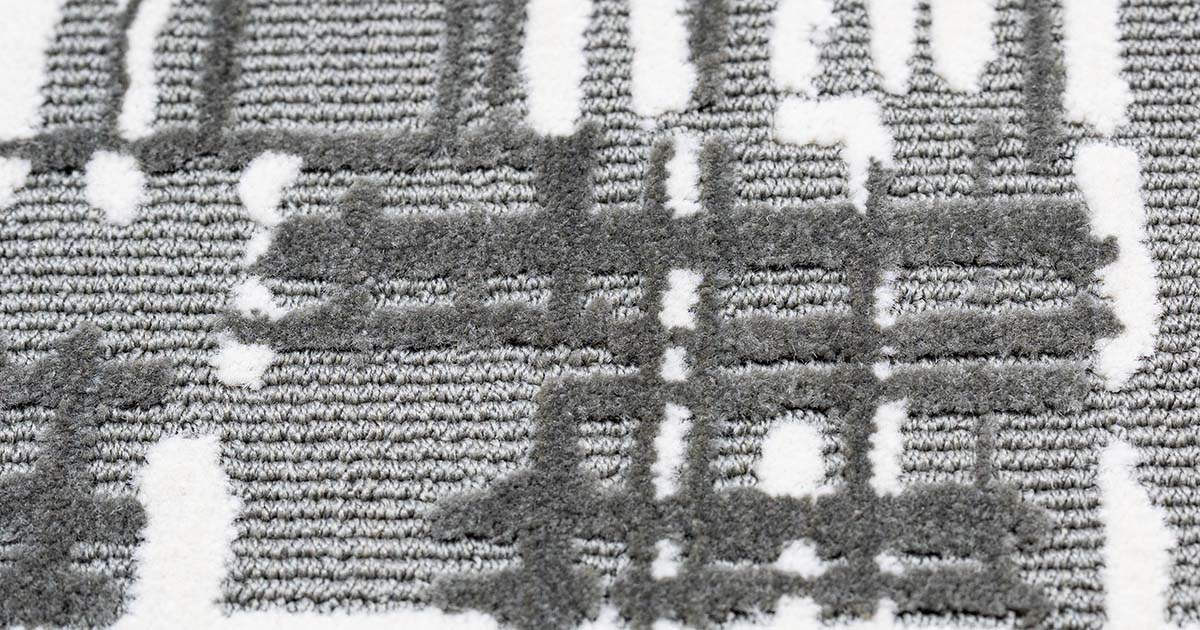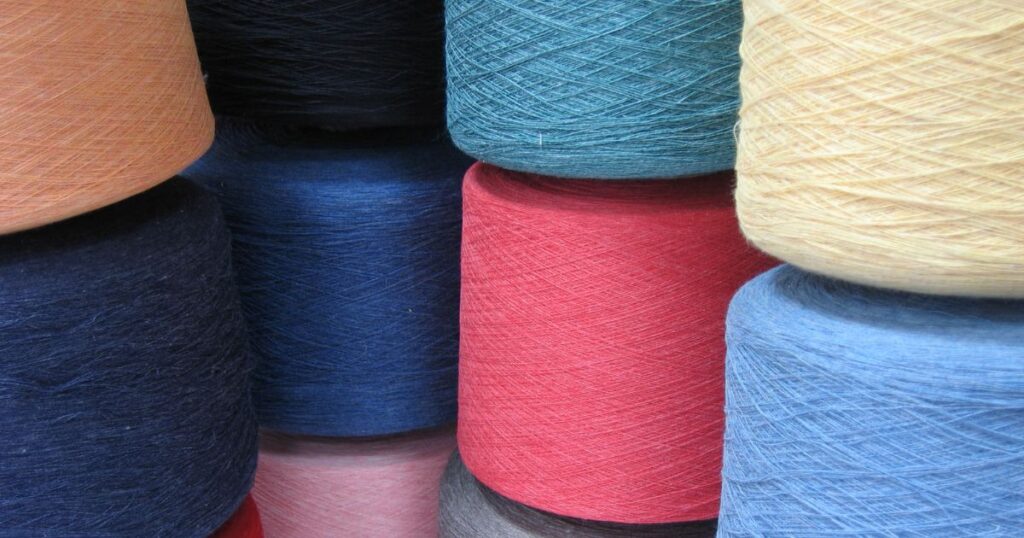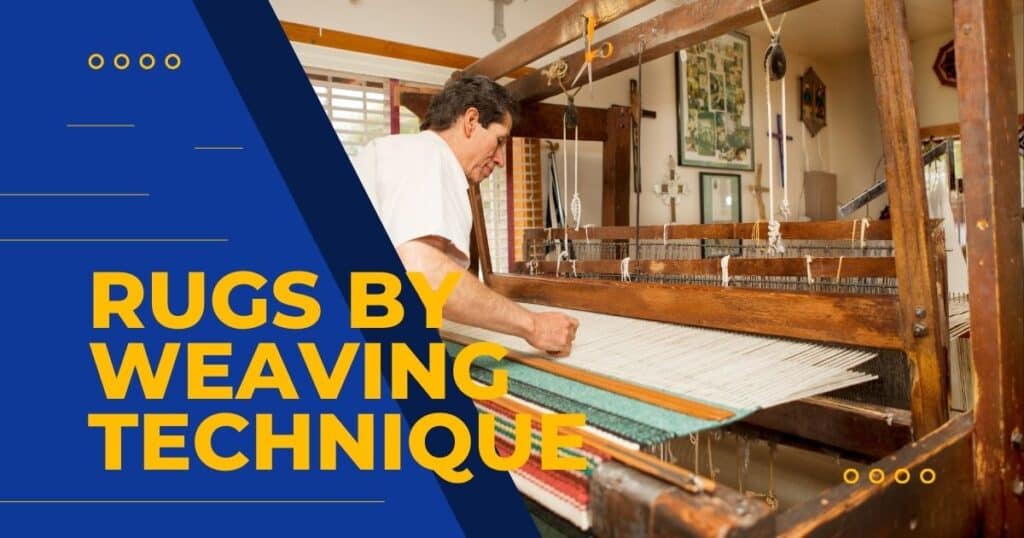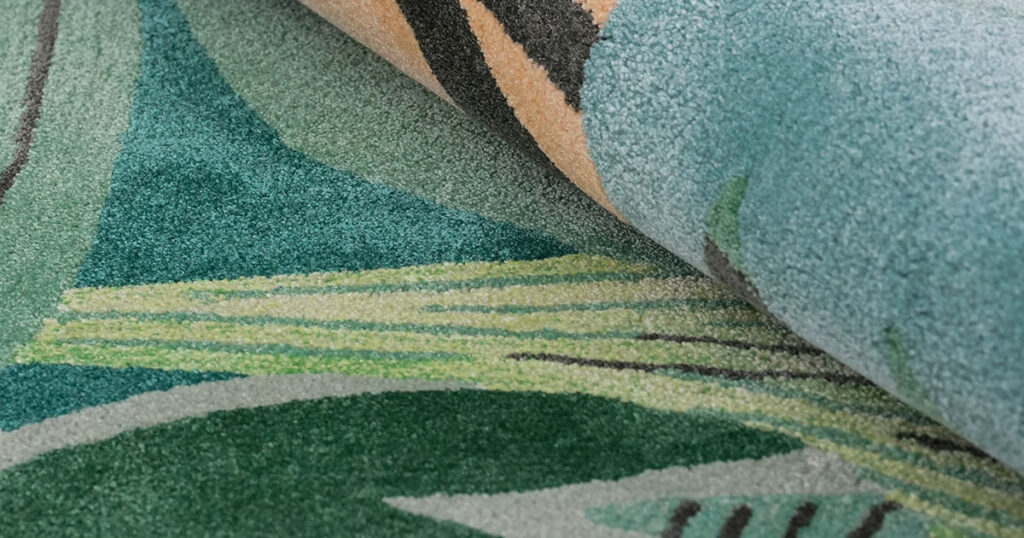Choosing the right rug for your commercial space involves more than just picking a design you like.
Tufted rugs are popular for their plush feel and affordable price point.
But buying these rugs for business environments requires careful consideration.
- Many first-time buyers treat commercial rugs like residential ones.
- This leads to premature wear, safety issues, and wasted investment.
This guide will help you avoid common pitfalls and make smarter choices for your business space.
Durability Misconceptions
The most common mistake is overestimating what a tufted rug can handle in high-traffic commercial settings.
Expectation vs. Reality
Tufted rugs typically have a shorter lifespan (around 5-15 years) compared to hand-knotted rugs, which can last 20-100+ years. The difference comes from construction—tufted piles are glued in place, which limits longevity.
In a busy hotel lobby or office corridor, a typical hand-tufted rug might show serious wear after only a few years. By contrast, a good hand-knotted rug could handle that traffic for decades.
Not All Tufted Rugs Are Equal
The density of tufts, quality of yarn, and strength of backing adhesive greatly affect durability.
Using a residential-grade tufted rug in a commercial setting is a recipe for disappointment.
For high-traffic areas, look for:
- High-density tufted rugs specifically designed for heavy wear
- Premium hand-tufted rugs with very high tuft density (sometimes rated as “contract grade”)
- Rugs with weights around 6.5 kg/m² rather than standard 4.5 kg/m²
How to Avoid These Mistakes
- Match rug quality to your space’s traffic level
- Ask manufacturers about “heavy commercial traffic” ratings
- Choose wool or nylon yarns known for resilience
- Ensure the rug has a robust backing
Maintenance Issues
Maintenance is often overlooked but critical for commercial rug success.
The Shedding Reality
New tufted wool rugs tend to shed fibers, especially in the first few months. In a commercial setting, heavy shedding can be problematic—imagine clumps of fibers on an office floor or clogging vacuum cleaners.
Tufted rugs are particularly prone to this because fibers are only glued into place. If the glue or yarn quality is subpar, foot traffic can pull fibers loose continuously.
Cleaning Challenges
Tufted rugs don’t respond well to aggressive cleaning methods. Saturating a tufted rug with water or detergent can weaken the latex glue, causing the backing to discolor or develop odors.
If a tufted rug gets soaked (from a spilled drink or a shampoo machine), it can trap moisture in the backing, leading to mildew or unpleasant smells that are difficult to eliminate.
The Importance of Rug Pads
Skipping a proper rug pad is dangerous in commercial settings. Tufted rugs often have a fabric/canvas back that can be slick on hard floors—without a pad, the rug can creep or wrinkle, creating tripping hazards.
Additionally, a pad provides crucial support by keeping the rug in place and absorbing foot traffic impact. This cushioning effect extends the rug’s life by reducing stress on the backing and fibers.
How to Avoid These Mistakes
- Ask about fiber quality and shedding tendencies before purchasing
- Plan for extra vacuuming during the initial months
- Use gentle cleaning methods—blot spills, don’t soak
- Hire professionals experienced with tufted rugs for deep cleaning
- Always use a high-quality, commercial-grade non-slip rug pad
Design Mismatches
Even a durable, well-maintained rug can fail if it’s the wrong design for your space.
Practical Function vs. Visual Appeal
A common error is selecting a rug that looks beautiful but isn’t suited to your needs. For example, using a thick, high-pile tufted rug under conference tables where chairs need to roll, or choosing delicate materials for high-use areas.
Material matters too—a light-colored viscose tufted rug might have a gorgeous silky sheen, but in a hotel lounge, it will wear out and stain quickly. Viscose is notoriously weak and prone to water damage.
Size and Placement Errors
A rug that’s too small for its seating area makes a space feel disjointed. In commercial spaces, scale is crucial—a rug needs to be large enough to anchor the furniture arrangement properly.
Incorrectly sized rugs can also create wear patterns where people step on and off the edges frequently.
Color and Pattern Considerations
Color is not just an aesthetic choice but a maintenance consideration. Very light-colored rugs show every stain in busy environments, while mid-tone or patterned rugs mask stains and wear better.
Similarly, very dark rugs show lint and dust, requiring more frequent cleaning to look presentable.
How to Avoid These Mistakes
- For areas with rolling chairs, choose low-pile, tightly tufted rugs
- Select wool or solution-dyed nylon for high-traffic or sun-exposed areas
- Follow standard design guidelines for rug sizing (all front legs of furniture should sit on the rug)
- Consider custom sizing for perfect fit (a major advantage of tufted rugs)
- Choose speckled, heathered, or multi-color patterns that camouflage dirt
Cost-Related Errors
Budget considerations heavily influence rug purchases, but focusing on the wrong cost factors often leads to regrets.
The False Economy of Cheap Rugs
An extremely cheap tufted rug can be a false economy in commercial settings. Opting for the lowest-priced option often means compromises in materials and construction.
For a business, a deteriorating rug reflects poorly on your image, and replacing it frequently erases any upfront savings.
Ignoring Total Cost of Ownership
Beyond the purchase price, there are ongoing costs to consider. A rug in a commercial space will incur maintenance expenses (cleaning, repairs) and eventually replacement costs.
Looking at long-term value, a hand-tufted rug that costs $2,000 and lasts 5 years effectively costs $400 per year. Meanwhile, a hand-knotted rug might cost $6,000 but could last 30 years ($200 per year, possibly with resale value).
Hidden Costs to Consider
Don’t forget to budget for:
- Proper rug pad
- Professional cleaning
- Periodic treatments for stain protection
- Downtime or disruption when replacing worn rugs
How to Avoid These Mistakes
- Allocate budget for the best quality rug you can afford for your intended use
- Calculate the total cost of ownership (purchase price ÷ expected years of service)
- Factor in maintenance costs when comparing options
- Consider a rug’s lifecycle in relation to your business plans
Sourcing Mistakes
Where and how you source your tufted rug makes a significant difference in satisfaction with your purchase.
Verifying Construction Claims
Tufted rugs are sometimes marketed simply as “handmade wool rugs,” which can mislead buyers into thinking they’re getting a hand-knotted piece.
Without verification, you might miss signs of poor quality: loose tufts, weak spots, or harsh chemical odors. A strong rubbery smell in a new tufted rug indicates low-grade latex that can off-gas or deteriorate quickly.
Commercial Standards and Safety
Rugs in business environments need to meet certain commercial-grade standards for fire safety and slip resistance, yet buyers sometimes purchase residential rugs without realizing they might violate regulations.
Wool tufted rugs generally perform well (wool is naturally flame-retardant), but tufted rugs with synthetic content might need treatment to be safe.
Buying Without Samples
Ordering multiple rugs without obtaining a sample can be risky—if the color is off-brand or the pattern scale is wrong, you’re stuck with a costly problem multiplied across locations.
Similarly, not checking a rug in person means you might miss tactile issues: perhaps it’s too thick for door clearance or the binding doesn’t look neat.
How to Avoid These Mistakes
- Always check the rug’s backside and construction details
- Ask directly: “Is this hand-tufted or hand-knotted?”
- Confirm compliance with commercial standards (fire ratings, durability classification)
- Request a sample or “strike-off” before large orders
- Check the seller’s return policy for commercial quantities
Making Informed Decisions
Tufted rugs can absolutely work in commercial settings—many boutiques, hotels, and offices use them successfully for their custom design flexibility and affordable price point. The key is selecting and managing them with more foresight than you might need for a residential rug.
By avoiding these common mistakes, you’ll:
- Save money in the long run
- Maintain a professional appearance
- Reduce safety hazards
- Extend the life of your investment
Remember that in commercial environments, rugs face greater challenges than at home.
They must withstand heavier foot traffic, more frequent cleaning, and stricter safety standards.
Your Next Steps
When you’re ready to purchase tufted rugs for your commercial space:
- Assess your needs: Traffic level, cleaning requirements, and design goals
- Research suppliers: Look for those specializing in commercial/contract-grade products
- Request samples: See and feel the rug before committing to large orders
- Consider maintenance: Budget for proper cleaning and care
- Invest in quality: Focus on value rather than the lowest price
With these guidelines in mind, you’ll be well-equipped to make smart choices for your business environment.




